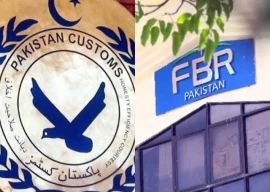
Exactly a year ago, I lamented in this space that the previous year (2020) was wasted for the telecom sector. I ended on an optimistic note since so many things appeared to be rightly aligned, and the pandemic was pushing all stakeholders to “do more”.
I present below my views on how bright – or otherwise – year 2021 has been for Pakistan telecom, and what we should do going forward.
The most significant event of 2021 was the spectrum auction that was expected to bring much-needed improvements in internet speed and quality.
Pakistan happens to be one of the most spectrum-starved countries in the world, and no new spectrum had been released since 2014. But sadly, the auction did not meet the objective of improving the mobile internet (only about one-third of the offered spectrum was picked up), nor did it meet the short-term objective of generating a high amount of cash for the government (only $279 million was earned against the projection of over $830 million).
A similar spectrum auction in G-B/AJK produced better results. With easier commercial terms, it resulted in the sale of 62% of the offered spectrum. The cash generated for the government was 76% of what was projected. It appears from the above two examples that if a large amount of spectrum is offered at reasonable prices and easier terms (even with stringent targets of quality and speed), it would not only bring more cash for the government but would also allow the internet to play its vital role in economic development of the country.
There are tons of spectrum in five more bands, all lying unused, which should better be released rather early, before disruptive technologies, like Starlink satellites, make the hoarded spectrum worthless.
Talking of Starlink, a regulatory framework for such futuristic networks is also needed. Providing them access based on existing licensing regimes may not be the best strategy for billions of dollars invested in the country. In 2021, one continued to wait for the promised regulatory framework, and the licence-free spectrum, for the Internet of Things (IoT) after public consultations concluded in August 2021. Globally, IoT is one of the fastest growing segments of the sector. It is playing a huge role in the development of agriculture, livestock, forestry, water conservation, supply chains, traffic and utilities management, etc.
Delay in announcing the licence-free spectrum for IoT is holding back such initiatives in Pakistan. The delay does not benefit anyone – except perhaps the mobile operators.
Some other very important regulatory frameworks also did not see the light of the day, like the reformed mobile licensing framework, the frequency-sharing/ trading framework, and the telecom infrastructure-sharing framework. Public consultations on the last one concluded over a year ago. Facilitating, rather encouraging, infrastructure sharing/ outsourcing results in enormous savings for the nation. In the early years of mobile communications, colossal amounts were wasted by erecting four to five towers at every location, where only one could have sufficed for several mobile operators. The same blunder is now being repeated in the case of optic fibre cables.
In affluent areas of big cities, multiple fibre cables are being laid on the same routes, where only one telecom infrastructure provider could do it for all the service providers. This is resulting in wasteful, redundant infrastructure in the affluent neighbourhoods, and no infrastructure in the poorer ones.
Not so bright
The policy directive governing the Right of Way (RoW) for the telecom infrastructure announced in early 2021, helped, but only to some extent.
Big owners of RoW continue to create hurdles for investors in telecom infrastructure. Earning from RoW (essentially rent-seeking) takes precedence over any benefits accruing to the country. Perhaps, the RoW policies need more teeth. Promoting telecom infrastructure providers can also help, as they cut the amount of RoW required.
The RoW issue is hindering optic fibre penetration, which is the most essential ingredient for a better quality internet, and 5G.
Bright spots
The brightest spot in 2021 was some respite in taxes given to the heavily taxed telecom sector. However, as this article is being written, there are rumours of re-imposition of sales tax on IT devices in the upcoming mini-budget. Needless to say, if that happens it would be a massive setback.
Another bright spot in 2021 was the rapid growth in the local manufacturing of mobile devices. Thanks to the DIRBS system of PTA, the smuggling of completely built phones is effectively blocked. This helps the local manufacturers to benefit from the tariff differentials.
Nearly 30 companies now hold licences for the local assembly/ manufacturing, with most of them making a good use of it. The next challenge is to make them switch over from mostly 2G phones to smartphones. They may keep producing 2G phones for export, for which the government may even give them a higher rebate.
In the last couple of years, the Universal Service Fund (USF) under the Ministry of IT has been making strong efforts to bring internet to more remote/ rural locations which the private sector does not find lucrative enough.
USF’s increased emphasis on optic fibre cables is particularly admirable. In fact, it is time to stop subsidising any towers that do not have fibre backhaul. USF should also fund demand side of the internet, just as more successful USFs of Indonesia, Malaysia, and some others do. This improves the internet adoption among the masses, without which supplying internet is useless.
Mobile Termination Rate (MTR) determines the charges to be paid by the operator from where a call originates to the operator where the call terminates. A reduction in MTR in 2021 was welcomed by the smaller operators.
In the case of bigger ones, one can understand the pain of revenue depletion in a market of already low average revenues. But to be fair, with a higher MTR, the bigger operators were benefiting at the cost of the smaller ones, who were bleeding because of it. In the long run, these termination charges are set to disappear anyway.
The future
The recently announced (December 2) Network Readiness Index 2021 ranks Pakistan at 97 out of 130 countries – behind neighbours Bangladesh (95), Iran (79), Sri Lanka (78), and India (67).
We must correct this, and regain our lost position! There are reasons for optimism. GSMA estimates that in the next five years, Pakistani telcos are expected to spend $3.5 billion on their networks.
The Ministry of IT, with the assistance of the World Bank, is doing a commendable job of formulating an all-encompassing 5G strategy, aimed at boosting 4G subscriptions in 2022, leading to a tipping point in favour of 5G by early 2023.
A lot will depend on how the government plays its role of an enabler/ facilitator in 2022, including quickly releasing large contagious spectrum bands, at reasonable terms and prices, that can be used for 4G and 5G both; resolving RoW issue, and promoting infrastructure providers, to bring a quantum jump in optic fibre penetration; improving ease of doing telecom business (eg by setting up a telecom tribunal); and opening up USF for the demand side too including smartphones.
The writer is former CEO of the Universal Service Fund and is providing ICT consultancy services in several countries of Africa and Asia
Published in The Express Tribune, December 20th, 2021.
Like Business on Facebook, follow @TribuneBiz on Twitter to stay informed and join in the conversation.



1725443747-0/Untitled-design-(5)1725443747-0-165x106.webp)














COMMENTS (2)
Comments are moderated and generally will be posted if they are on-topic and not abusive.
For more information, please see our Comments FAQ